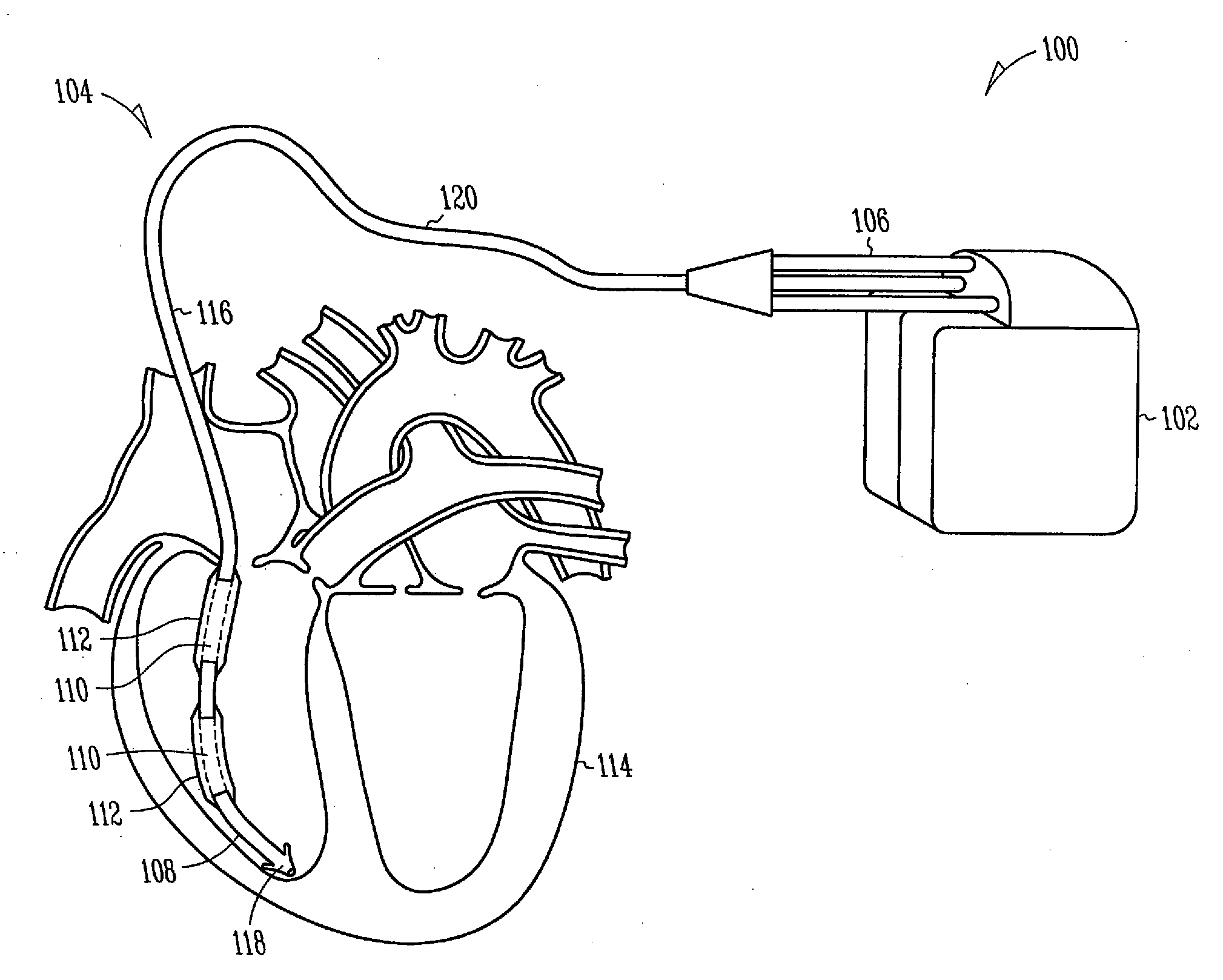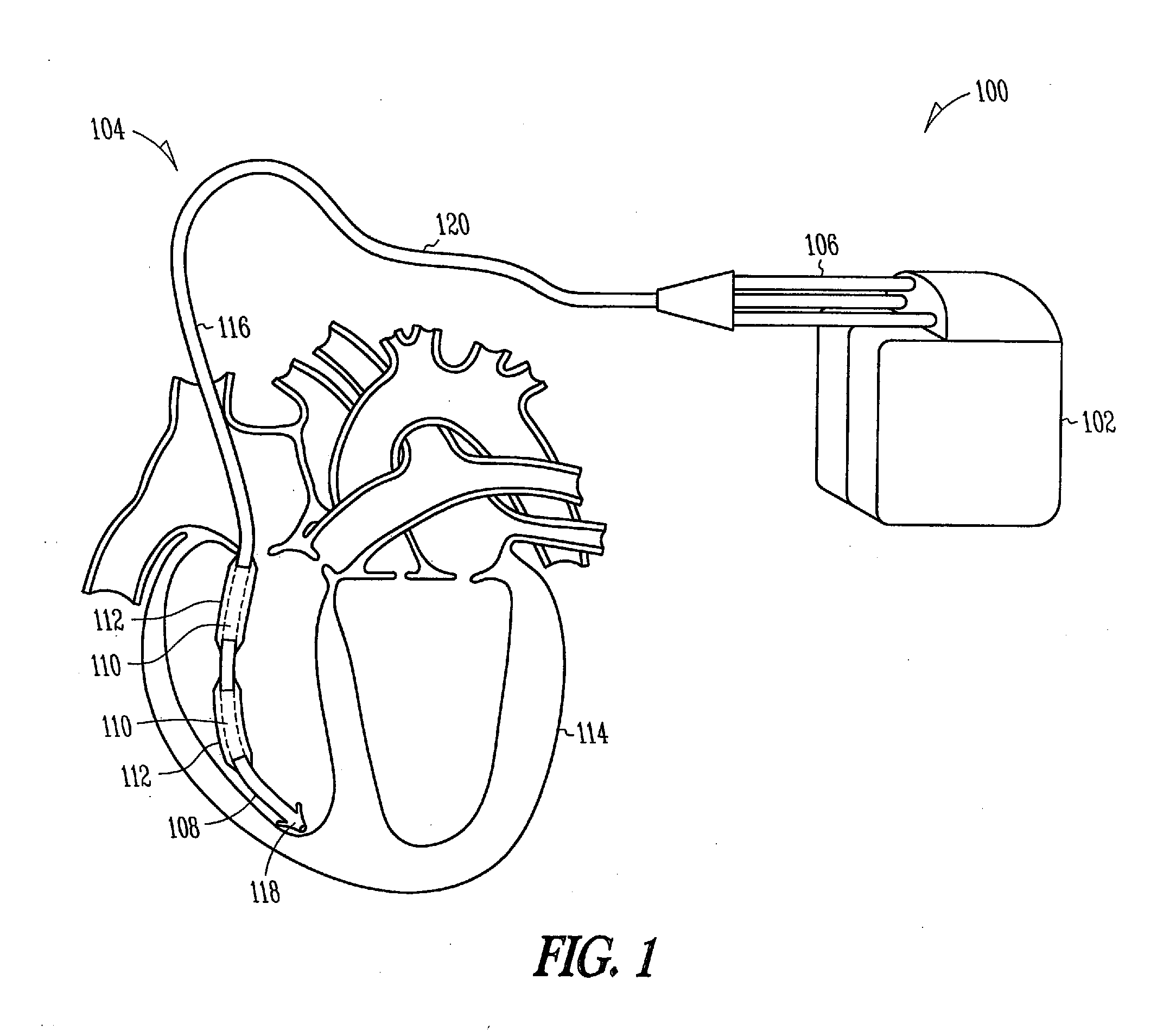Fibrosis-limiting material attachment
a technology of fibrosis-limiting materials and fibrosis-limiting materials, applied in electrotherapy, therapy, etc., can solve the problems of affecting the ability of fibrosis-limiting materials to be applied to shock coil electrodes in ways that lack sufficient attachment strength, and reducing the possibility of movement. , to achieve the effect of facilitating lead implantation and extractability, reducing the likelihood of movement, and improving the ease of chronic lead extraction
- Summary
- Abstract
- Description
- Claims
- Application Information
AI Technical Summary
Benefits of technology
Problems solved by technology
Method used
Image
Examples
Embodiment Construction
[0019]The following detailed description includes references to the accompanying drawings, which form a part of the detailed description. The drawings show, by way of illustration, specific embodiments in which the present leads and methods may be practiced. These embodiments, which are also referred to herein as “examples,” are described in enough detail to enable those skilled in the art to practice the present leads and methods. The embodiments may be combined, other embodiments may be utilized or structural or logical changes may be made without departing from the scope of the present leads and methods. The following detailed description is, therefore, not to be taken in a limiting sense, and the scope of the present leads and methods is defined by the appended claims and their legal equivalents.
[0020]In this document, the terms “a” or “an” are used to include one or more than one, and the term “or” is used to refer to a nonexclusive “or” unless otherwise indicated. In addition,...
PUM
 Login to View More
Login to View More Abstract
Description
Claims
Application Information
 Login to View More
Login to View More - R&D
- Intellectual Property
- Life Sciences
- Materials
- Tech Scout
- Unparalleled Data Quality
- Higher Quality Content
- 60% Fewer Hallucinations
Browse by: Latest US Patents, China's latest patents, Technical Efficacy Thesaurus, Application Domain, Technology Topic, Popular Technical Reports.
© 2025 PatSnap. All rights reserved.Legal|Privacy policy|Modern Slavery Act Transparency Statement|Sitemap|About US| Contact US: help@patsnap.com



